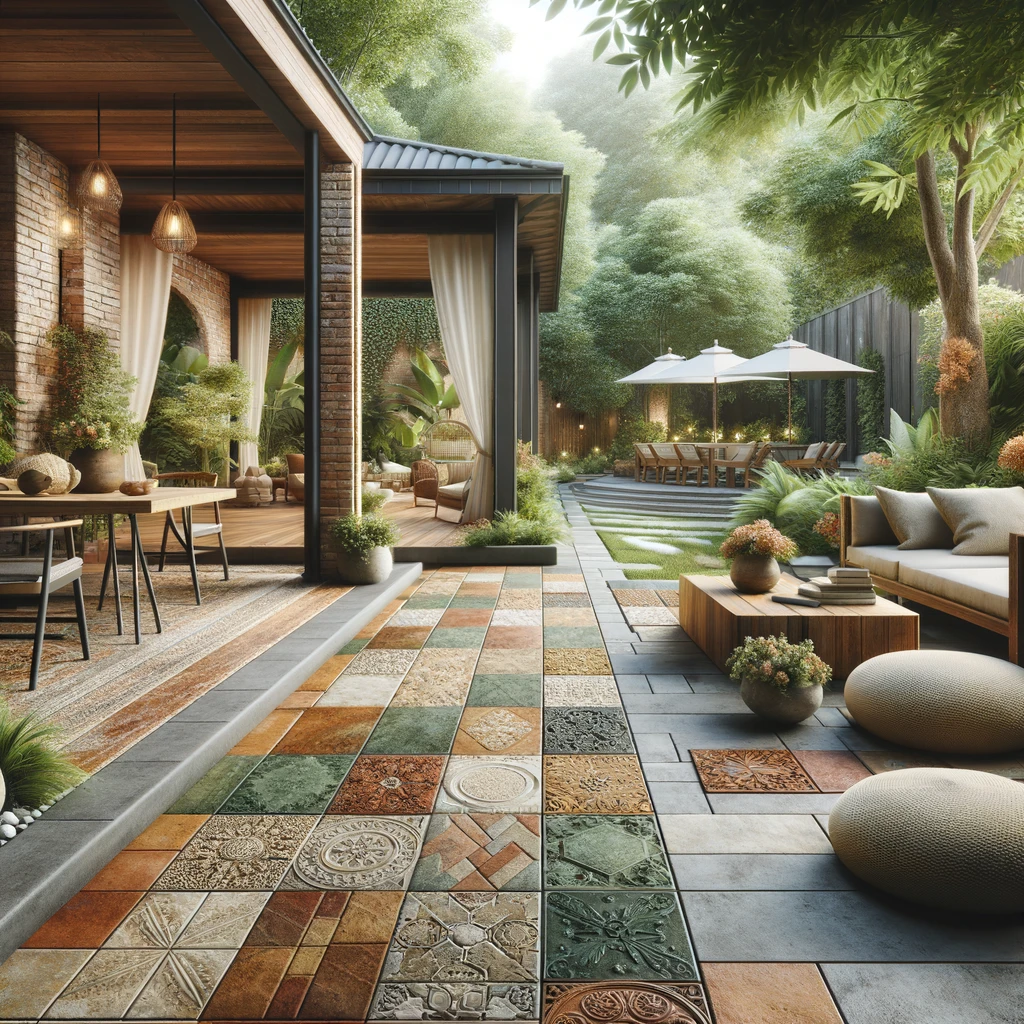Rediscovering the Artistry of Clay Tiles
In a previous discussion, we delved into the rich tapestry of ceramic tiles, exploring their diverse forms—clay tiles, glazed tiles, Zellige, terracotta tiles, quarry tiles, and Saltillo tiles. Embarking on a new series, we now turn our attention to each type individually, dissecting their nuances in terms of composition, appearance, durability, maintenance, use cases, cost, heat resistance, stain resistance, variety, surface texture, and environmental impact. Today, our spotlight shines on the enduring charm of clay tiles.
The Beauty in Simplicity: Composition and Appearance
Crafted from natural clay and nurtured in the embrace of a kiln, clay tiles emanate a simple yet captivating earthy appearance. The firing process not only bestows upon them a robust structure but also introduces a spectrum of earth-toned colors—ranging from terracotta reds to sandy beiges. Embracing the inherent variations in color and texture, clay tiles boast a character that is uniquely their own.

Durability Woven in Time: Resilience and Maintenance
Celebrated for their robustness, clay tiles stand as a testament to durability. When expertly installed and sealed, these tiles weather the passage of decades with grace. Maintenance is a simple ritual of regular cleaning and periodic sealing, preserving their innate beauty and guarding against moisture’s gentle advances.
Versatility Beyond Borders: Use Cases
The adaptability of clay tiles extends across diverse settings. From gracing rustic kitchen floors to adorning elegant roofscapes, these tiles seamlessly transition between indoor and outdoor environments. A preferred choice for patios, walkways, and spaces demanding both strength and style, clay tiles embody a versatile flooring solution.
Navigating the Cost Terrain
The financial landscape of clay tiles is shaped by factors such as quality, origin, and manufacturing techniques. Handmade treasures often command a higher price, but their enduring lifespan positions them as a judicious investment over time.

Resisting the Elements: Heat and Stain Resistance
In the realm of climatic challenges, clay tiles emerge victorious, naturally resistant to heat. Suited for hot climates and compatible with underfloor heating systems, they stand resilient. While inherently stain-resistant, a touch of sealing enhances this property, particularly in high-traffic or spill-prone zones.
Diversity in Design – Variety and Texture
The world of clay tiles unfolds a rich tapestry of variety, ranging from smooth, glazed finishes to handcrafted, textured designs. This diversity paves the way for artistic expression, empowering homeowners and designers to align tiles seamlessly with their aesthetic visions.
Environmental Harmony: Sustainability at Its Core
Clay tiles ascend the sustainability scale. Fashioned from abundant natural materials, they embody recyclability and often undergo minimal chemical processing. Beyond aesthetics, their thermal properties contribute to the energy efficiency of buildings.

Beyond Flooring—A Conscious Choice
More than a flooring option, clay tiles embody a conscious choice that marries functionality with environmental awareness. Whether breathing new life into a historic property or constructing an eco-friendly haven, clay tiles emerge as a practical and aesthetically pleasing solution—a timeless testament to the enduring allure of earth’s craftsmanship.






